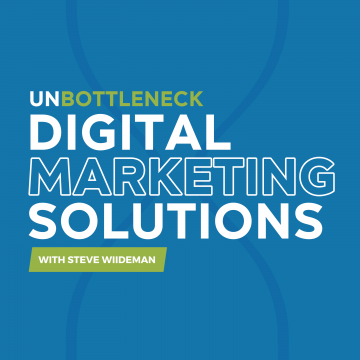Relax. Despite recent and upcoming Google Penguin Updates, Google hasn’t (yet) removed hyperlinks from their ranking algorithm. However, in the SEO community, the buzz seems to have shifted quite a bit from the importance of links to the value of brand authority and user search behavior signals, two focal points often neglected by most SEOs.
So, what would happen if Google were to remove links altogether? I’ve watched numerous zero-link domains skyrocket to the top of search results and sustain that ranking. Here’s how I believe they’ve accomplished this feat:
Ranking without Links – Step 1: Brand Equity
In 2009, Google released the “Vince Update” named after its creator and designed, in essence, to give a higher trust score to prominent brands.
What makes a brand prominent? In the real world, a prominent brand is one that becomes popular or recognized as a result of other marketing efforts (such as banner ads, paid search ads, content network ads, TV and radio ads, circulars, and passing the brick and mortar store on the road). In the eyes of search engines, our best guess is that prominence is one part frequency and one part authority.
Frequency clues are easy to find. Simply perform a search for a particular brand and its competitors. Look for the first line of text indicating “About X results (Y seconds)”. Below is an example comparing the frequency of results for Macy’s, Nordstrom and Saks. Keep in mind, there’s a chance that 5,409,999 of Macy’s results are useless (low quality) content on .ru or .co.in domains, so frequency alone will not help you rank any better.

Using Frequency to Help Determine Brand Prominence
Frequency can also include the number of searches for a brand. See the example below comparing the above brands using Google’s Keyword Planner. To influence search volumes, your marketing department will have to leave the SEO department for five minutes, and actually consider traditional media, such as TV, radio, circulars, and other offline marketing mediums. It also doesn’t hurt to have a rockstar PR expert with tons of connections. Just look at the number of news, media, and blog mentions for “Belkin iPad Air Cases” in the SERPS to see what a rockstar can accomplish with the right outreach strategy.
Google Searches for Prominent Brands
Authority clues aren’t as easy to find or calculate. Thankfully, the gurus at Moz have created numerous metrics to help provide comparative insights, such as mozTrust, a “calculation of the link distance between a given page and a seeded trust source on the Internet. Think of this like six degrees of separation: The closer you are linked to a trusted website, the more trust you have, yourself.”
These Frequency and Authority signals have been tested in multiple ranking studies, such as my own Beat the Autocomplete study in 2010. Give your site a competitive look using the tests above to see where you might stand as a brand with the search engines.
Ranking without Links – Step 2: Brand Co-Occurrence
In the earlier days of search, one of my favorite examples of showing how search engine algorithms might work involved getting people to query “SEO Expert” to see where I ranked within search results. I asked for a show of hands of people who used my name as part of the search, and then a show of hands of those who actually clicked the listing. End result, Google began to think my name was semantic to the keyword “SEO Expert.”
Using the same tests from Step 1, you could see my name appear more frequently than my competition, despite the fact that they most had higher quality links and much better content. Unfair, right? Here’s where user search behavior trumps links time and time again.
Let’s repeat the brand equity exercise above, but this time using keywords:
Keyword Co-Occurrence
Just for fun, take a look at who actually ranks higher for the non-branded keyword “women’s shoes” in Google: http://bit.ly/womens-shoes-serps. That’s right—Nordstrom.
Rand Fishkin predicted a shift in the importance of anchor text and co-citation (as he referred to it) in this 2012 Whiteboard Friday video:
<
Depending on your industry, a quick way to boost co-occurrence might be to simply search for the topic your product or service falls under, record the first 30-50 results that appear and figure out a brilliant creative strategy to get your business’s name to appear on those pages.
You can also find similar verticals and build relationships with those brands that result in both super-relevant referral traffic on a page that mentions your brand and your keyword (product or service) as a co-citation.
Ranking without Links – Step 3: Search, Click and Stay Behavior
If you research click-through rate (CTR) enough, you’ll find arguments for and against the idea that CTR may be an important search engine ranking signal. I mean, why wouldn’t it be, since it’s apparently an AdWords Quality Score signal, right?
Every test I’ve witnessed (including the “SEO Expert” example above) resulted in higher placement when users surf through results and click on a specific listing more so than other listings.
WARNING: If you’re running your own tests, note that this behavior manipulation must appear natural, and will die as fast as it started if you don’t keep the test running. In other words, real people have to search, click and remain on your website. Trying to game search results using Mechanical Turk or other service isn’t sustainable; eventually you’ll run out of unique IPs, be detected, and likely be REMOVED from search results altogether.
Years ago, I had my LinkedIn connections perform this experiment, having them search for a blog post I had written promoting a Business.com contest. Within an hour, my blog post moved from page 3 to page 1. By the end of the day, I owned the #1 spot in Google SERPS. The next day, my listing was filtered out (removed).
To get people to search, broadcast your post in webinars, interviews, and anywhere you can use the phrase “search for post_name by author_name”. Once you’ve earned your top spot, you should keep your ranking if the post truly is the most useful of anything else out there.
Usefulness is the key to preventing users from returning to Google.
Google Linking Algorithm Dies – What are You Going to Do?
It’s doubtful links are going anywhere anytime soon. However, if they were to go away, would your brand have enough frequency, authority, co-occurrence, or positive search behavior to survive? What other signals do you believe search engines look at if not your keyword-optimized content or backlinks?
Share your thoughts below




